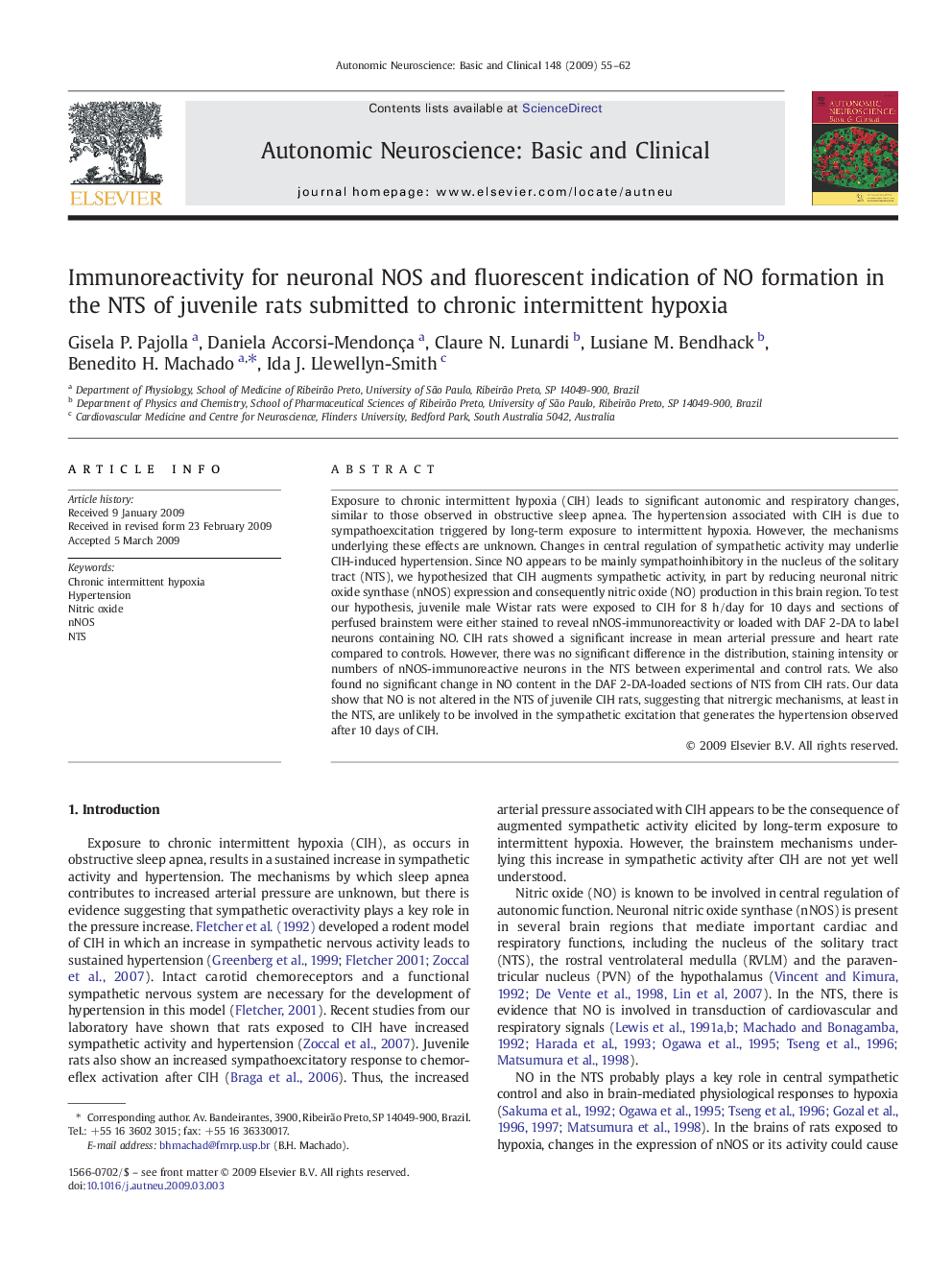| Article ID | Journal | Published Year | Pages | File Type |
|---|---|---|---|---|
| 6004819 | Autonomic Neuroscience | 2009 | 8 Pages |
Exposure to chronic intermittent hypoxia (CIH) leads to significant autonomic and respiratory changes, similar to those observed in obstructive sleep apnea. The hypertension associated with CIH is due to sympathoexcitation triggered by long-term exposure to intermittent hypoxia. However, the mechanisms underlying these effects are unknown. Changes in central regulation of sympathetic activity may underlie CIH-induced hypertension. Since NO appears to be mainly sympathoinhibitory in the nucleus of the solitary tract (NTS), we hypothesized that CIH augments sympathetic activity, in part by reducing neuronal nitric oxide synthase (nNOS) expression and consequently nitric oxide (NO) production in this brain region. To test our hypothesis, juvenile male Wistar rats were exposed to CIH for 8Â h/day for 10Â days and sections of perfused brainstem were either stained to reveal nNOS-immunoreactivity or loaded with DAF 2-DA to label neurons containing NO. CIH rats showed a significant increase in mean arterial pressure and heart rate compared to controls. However, there was no significant difference in the distribution, staining intensity or numbers of nNOS-immunoreactive neurons in the NTS between experimental and control rats. We also found no significant change in NO content in the DAF 2-DA-loaded sections of NTS from CIH rats. Our data show that NO is not altered in the NTS of juvenile CIH rats, suggesting that nitrergic mechanisms, at least in the NTS, are unlikely to be involved in the sympathetic excitation that generates the hypertension observed after 10Â days of CIH.
